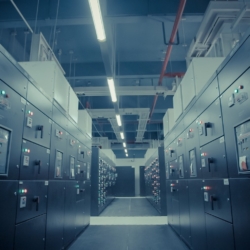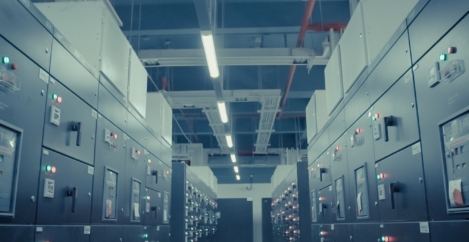September 9, 2024
Generative AI will lead to a threefold increase in greenhouse gases from data centres
 A new report claims that data centres will generate around 2.5 billion tonnes of greenhouse gas (GHG) emissions worldwide by the end of the decade. This figure is three times higher than it would have been had the rapid rise of generative artificial intelligence (AI) not occurred. The report, published by Morgan Stanley titled Global Data Centers: Sizing & Solving for CO2, suggests that the combined emissions from the construction of new facilities and their energy consumption will amount to around 2.5 billion tonnes of CO2-equivalent by 2030, roughly 40 per cent of the United States’ current annual emissions
A new report claims that data centres will generate around 2.5 billion tonnes of greenhouse gas (GHG) emissions worldwide by the end of the decade. This figure is three times higher than it would have been had the rapid rise of generative artificial intelligence (AI) not occurred. The report, published by Morgan Stanley titled Global Data Centers: Sizing & Solving for CO2, suggests that the combined emissions from the construction of new facilities and their energy consumption will amount to around 2.5 billion tonnes of CO2-equivalent by 2030, roughly 40 per cent of the United States’ current annual emissions
The report bases its conclusions on an assessment of emissions across Scope 1, 2, and 3. Scope 1 refers to direct emissions, Scope 2 to indirect emissions from energy consumption, and Scope 3 to other indirect emissions, such as those from supply chains. The report c.
The report argues that about 60 per cent of these emissions will come from the power required to operate the data centres, classified as operational carbon. The remaining 40 per cent will be due to embodied carbon – the emissions produced during the manufacturing of construction materials and the infrastructure needed to support these facilities.
A significant point raised by the report is the role that generative AI plays in driving the expansion of the data centre sector. With AI’s growing demand for computational power, especially in machine learning and natural language processing, the need for more data centres has skyrocketed, the report says.
The analysis indicates that without the boom in AI development, emissions from data centres would be approximately one-third of what they are currently forecasted to be by 2030. In terms of carbon emissions from construction alone, the report forecasts an increase from 200 million tonnes today to 600 million tonnes by the decade’s end.
The report identifies what it says are substantial opportunities for decarbonisation within the data centre market. Key solutions include carbon capture, utilisation, and sequestration (CCUS), as well as carbon dioxide removal (CDR) technologies. The bank estimates that there could be a market for CCUS in the data centre sector worth $15-45 billion by 2030, with the potential to capture up to 260 million tonnes of CO2-equivalent. This is especially relevant for the United States, which is expected to host more than 50 per cent of new global data centre construction, making it a prime market for decarbonisation solutions.
On the CDR front, Morgan Stanley projects that just four hyperscale operators – Microsoft, Google, Meta, and Apple – will require 25 million tonnes of CO2-equivalent removal by 2030. This represents a twentyfold increase from their current levels of carbon removal, indicating the scale of growth in demand for these services. Given the limited supply of CDRs, the report suggests that reforestation projects will be key to achieving the net-zero targets these tech giants have committed to.
A global challenge
The growth of the data centre sector is not confined to the United States. Demand for data centre capacity is rising globally, driven by increased adoption of AI technologies. Hyperscale data centres – large-scale facilities used by major tech companies – are expected to triple in capacity over the next six years, largely due to the AI boom. This rapid expansion will result in a significant increase in energy consumption, prompting the construction of new facilities worldwide.
Data centres are known for their high energy consumption, with many relying heavily on non-renewable energy sources. In response, several leading companies have committed to carbon-neutral or net-zero goals, driving the development of renewable energy solutions and other decarbonisation efforts.
Countries such as China, the United States, and various European nations are at the forefront of data centre construction, while emerging markets in Asia, Africa, and Latin America are also seeing rapid growth. However, the challenges faced by these regions differ. For example, in developing countries, unreliable power grids and limited access to renewable energy sources make the transition to greener data centres more difficult.














